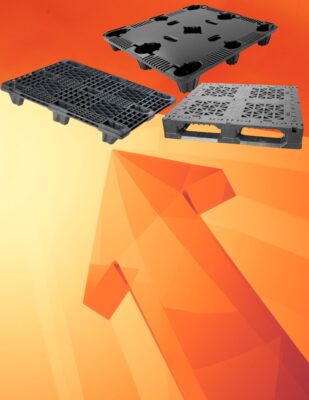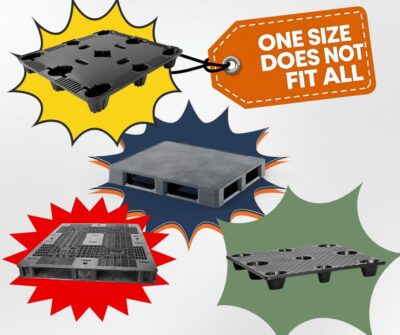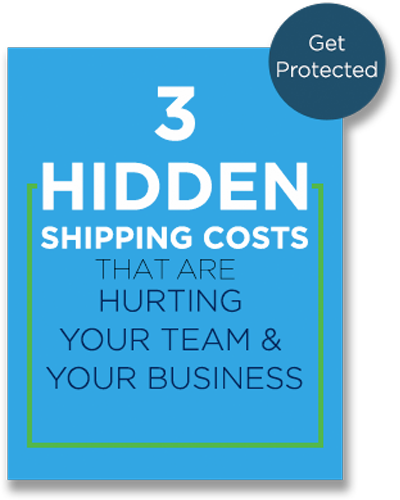Forklifts are an integral part of your processes and business. It makes sense then, that you would want to be well versed in forklift operation and best practices. Despite the extensive knowledge and training that professionals need prior to handling forklifts; many accidents involving employees and forklifts still occur every year. In fact, OSHA estimates that nearly 35,000 accidents involving forklifts and serious injury occur every single year. Below, we will cover five of the most common forklift accidents and how you can educate your team on proper forklift safety, helping to prevent them from ever happening at your facility again. Read on to learn more.
Collisions with / Accidents Involving Other Personnel
Forklifts rarely work in isolated areas, and are usually surrounded by other personnel, employees, and perhaps even customers depending on your facility type. As a result, many of the most common forklift accidents involve collisions with other people. According to the National Institute for Occupational Safety and Health (NIOSH), nearly 20 percent of forklift accidents involve a pedestrian. Furthermore, 36 percent of all forklift related deaths are of bystanders, not the operators. So how can we work to lower these statistics in our warehouses?
Be sure your forklift operators and management teams implement as many of the following, OSHA recommended safety solutions:
For your operators:
- Always remember to reduce speed and use your forklift’s horn as you turn corners, cross aisles, or reach other locations where driver vision is obstructed in some manner.
- Similarly, drivers should always keep their eyes on the road/ path of travel when operating an in-motion forklift.
- Never allow passengers to ride on the forklift unless and additional seat is provided.
- Never use a forklift to lift workers who are standing on the forks.
- Do not operate the forklift around anyone who is standing or working in front of a fixed object, such as a bench, or stacked pallets.
For Your Management Team:
- Spend time posting warning signs and applying floor tape to designate forklift zones to help keep pedestrians clear.
- Install lighting to alert pedestrians to the presence of a forklift in operation.
- Be sure to institute more breaks for your forklift operators, giving them a chance to stay fresh and focused while operating machinery.
- For additional safety measures, consider installing mirrors around corners to help increase driver visibility, or other barriers that protect on-foot employees.
Falling Loads and Pallets
For even the most experienced forklift operators, picking up and setting down heavy loads can be difficult at times. As visibility decreases, spaces narrow, or machinery ages, the odds of equipment failures and mistakes increase, meaning more pallets or entire loads being dropped.
To make matters even more difficult, forklift operators are often assigned to lift and transport unbalanced raw materials, smaller items, and other uneven loads that can make proper and safe forklift operation difficult, if not impossible. Whether from improper load creation as mentioned above, or from another flaw in the machinery or operation of the forklift, there are several measures you can implement to lower your rates of falling loads and pallets.
Possible Safety Solutions
- Be sure to report any damage sustained, or problems that occurred with a forklift during your shift.
- When operating forklift on a grade, tilt the load back and raise it only as far as is needed to clear the surface of the road.
- Never raise or lower the forks while the forklift is in motion.
- Never carry loose or damaged merchandise, and always center your load, and use a backrest.
Forklifts Falling Off Docks
While operating a forklift can be dangerous in any circumstance, one of the most important times for forklift operators to remain aware of their surroundings is while crossing thresholds. Most forklift falls are caused by trucks or trailers rolling away with the forklift caught in between, slippery or damaged floors, or improper dock plating. If you are operating a forklift and need to move between areas, or in and out of trailers, always remember to look before you leap.
Possible Safety Solutions
- When approaching a dock, or other threshold, slow down and inspect the floor of the new area before driving further.
- Before entering another vehicle, such as a semi-trailer, chock the truck/trailer wheels for added stability.
- Ensure the dock plate can meet the proper weight requirements and that it is properly placed.
Forklift Overturns and Rollovers
The leading cause of fatalities involving forklifts are overturns. Common causes of these deadly incidents include, turning to quickly, uneven or overweight loads, turning on inclines, or driving with the load elevated, and on uneven surfaces.
Possible Safety Solutions
Short of avoiding all the above scenarios, there are several ways to avoid overturns and rollovers:
- Always use extreme caution on grades or ramps of any kind.
- Never handle loads that are heavier than the weight capacity of the machine.
- Always operate the forklift at safe speeds that will allow you to stop without harm. This should also include slowing down when rounding sharp corners.
- Never turn on an incline and do your best to operate on smooth, level surfaces.
One further note: make sure to keep your load as close to the ground as possible. Lift trucks are actually at their most stable when the load is held closer to the ground.
What if a Rollover Still Occurs?
If you abide by all the safety protocols above, and a rollover still occurs, be sure to use your seatbelt for additional safety, and remain with the truck. Hold on firmly and try to lean away from the direction of the overturn. This is the best way to remain safe, and operators should never try to exit the vehicle during a rollover.
A Lack of Training
At the root of many of these common accidents is a lack of training for forklift operators. Vitally important for both the safety of the forklift operator and those working around the forklift, safety procedures should be followed to the letter by your forklift operators. Unfortunately, many operators don’t receive the training necessary to do so.
When operators are unfamiliar with all the regulations surrounding proper forklift usage, their chances of accident and injury increases dramatically. Whether because of unknown need or cut corners, if your forklift training isn’t as thorough as it should be, it’s time for an upgrade.
Better training leads to fewer accidents and mistakes, so be sure to sign up for OSHA-compliant forklift operator training.
Plastic Pallet Pros – More Than Pallets
While our team at Plastic Pallet Pros is always here to provide you with the best pallets and pallet expertise in the business, we want you to also know that we care about your business and are willing to help you in any way we can, including with helpful guides like the one above.
If you would like to talk more with our team about your pallet needs or want to chat about which pallets and techniques will help your business thrive, please do not hesitate to contact us today!







